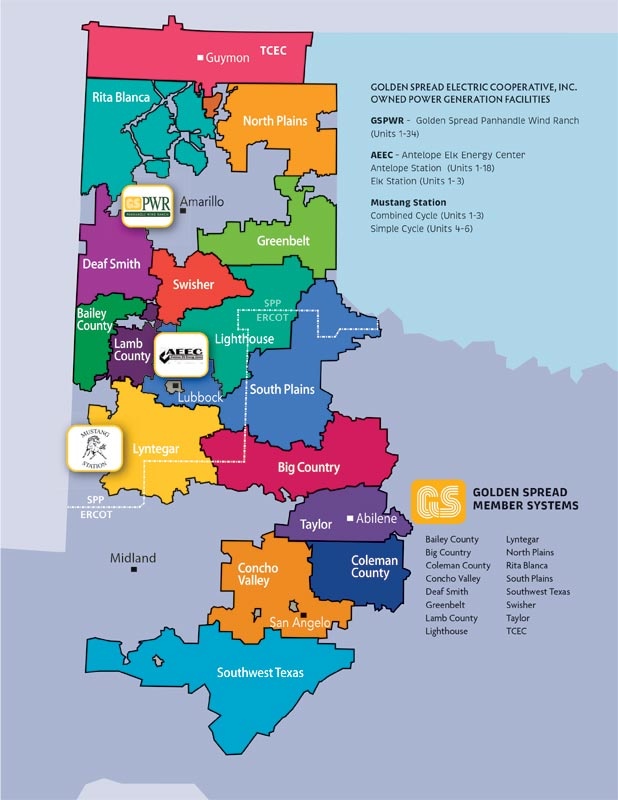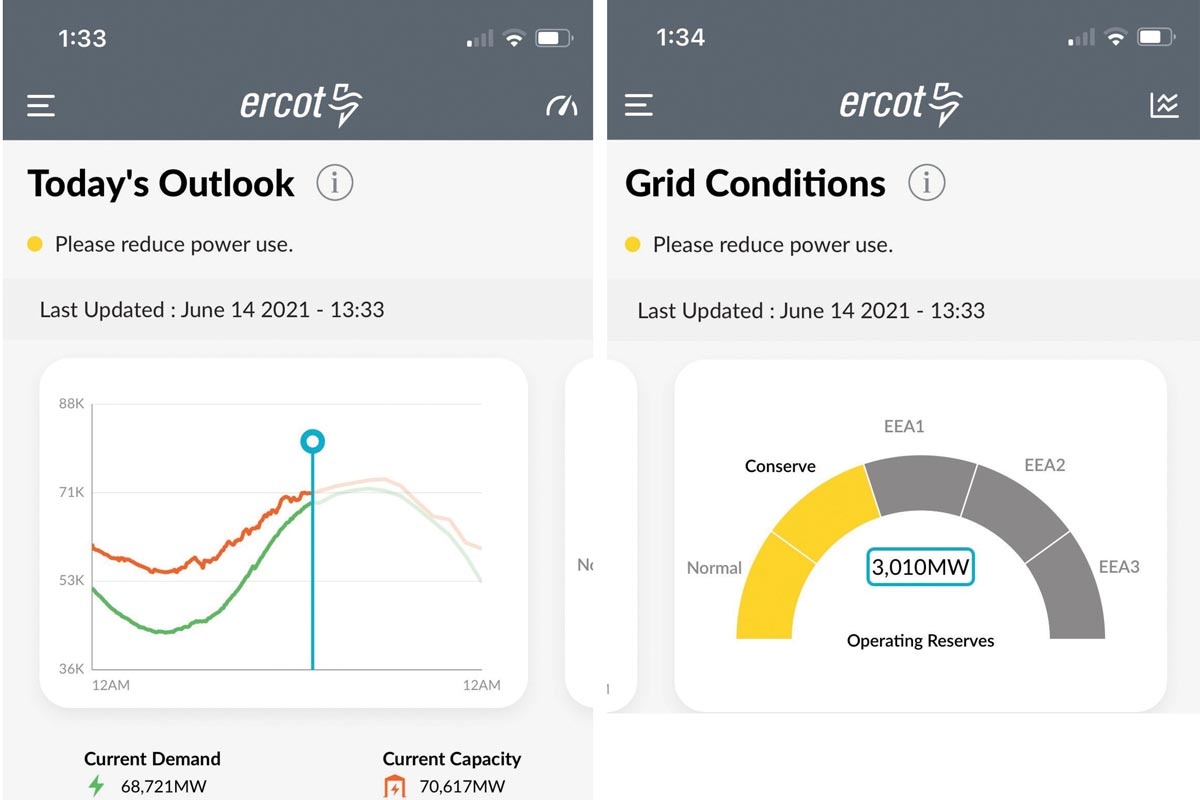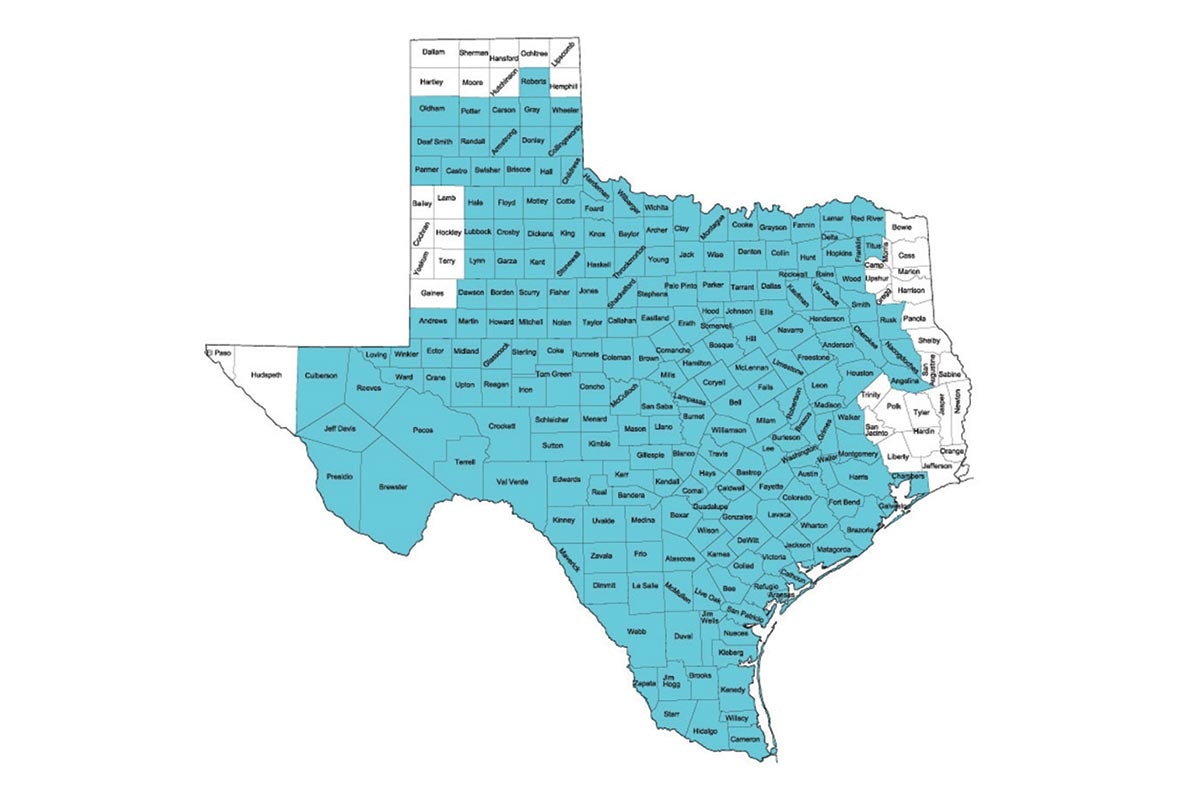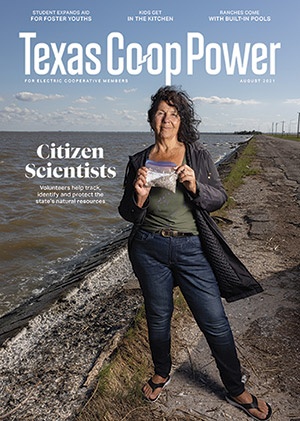Since the mid-February winter storm that spurred statewide grid-mandated rolling outages, many Big Country Electric Cooperative members have asked about what happened, if it could happen again and what lingering effects it might have on their electric bills. Although the situation is complex, I’d like to offer some insight and updates.
What is ERCOT and how does it work?
Similar to how an air traffic controller manages air traffic to and from airports, the Electric Reliability Council of Texas manages the flow of electricity to more than 26 million Texans—representing about 90% of the state’s electric load.
As the independent system operator for the region, ERCOT schedules power on an electric grid that connects more than 46,500 miles of transmission lines and 710-plus generation units. It also performs financial settlements for the competitive wholesale bulk-power market and administers retail switching for 8 million premises in competitive choice areas.
ERCOT is a membership-based 501(c)(4) nonprofit corporation, governed by a board of directors and subject to oversight by the Public Utility Commission of Texas and the Texas Legislature. Its members include consumers, cooperatives, generators, power marketers, retail electric providers, investor-owned electric utilities, transmission and distribution providers, and municipally owned electric utilities.

A map of the 16 cooperatives that are members of Golden Spread Electric Cooperative, the generation and transmission co-op from which Big Country Electric Cooperative purchases power on your behalf. As you can see, a small portion of Big Country EC’s distribution system is in the Southwest Power Pool, and the vast majority is in the Electric Reliability Council of Texas transmission grid.
About 80% of Big Country EC’s system, from Snyder east, is part of the ERCOT grid. The remaining 20% of our system, from Snyder west to Fluvanna, Justiceburg and Post, is in the Southwest Power Pool, a separate transmission grid from ERCOT that serves the Panhandle and Midwestern states.
How could Texas run short on electricity? We have so many wind and solar farms, not to mention abundant oil and gas.
Although ERCOT has been heavily scrutinized since the February polar vortex, the grid manager did what it was tasked with—protecting the grid. During the winter storm, we experienced statewide subfreezing temperatures, coupled with ice, wind and heavy cloud cover for several days. This effectively disabled wind and solar generation, which generate power on an intermittent basis.
Frozen natural gas lines were unable to transport the fuel necessary for other generation, leaving the energy market drastically short of the electricity required to power homes that needed more power than in a typical winter. The shortage of generation capacity was directly related to the weather. Even if we had more wind turbines and solar panels and more natural gas, the extreme cold likely would have made those resources inaccessible.
Senate Bill 7 deregulated Texas’ retail electric industry September 1, 1999. This allowed consumers in some areas to choose their retail energy provider (most often a different entity than the company that owns the local lines and equipment) and gave them options for different rates. Deregulation also effectively eliminated the method of matching electric generation to load demand, or the need for electricity—creating the potential for a gap between the amount of electricity needed and the supply available.
There have been a few limited grid-mandated rolling outages over the past two decades but none that had a significant impact on our area of the state—until February, when the winter storm and the aforementioned power gap collided.
Why can’t BCEC or other utilities refuse ERCOT directives to conserve energy or to initiate rolling outages?
Failure to comply could result in catastrophic damage to the state’s electric grid, which would leave most of Texas in the dark for days, weeks or possibly months—not to mention massive penalties and other repercussions for electric utilities that fail to comply. When given orders from ERCOT, our only option is to comply immediately.
Could rolling outages happen again?
Yes. Rolling outages are a last resort to keep the statewide grid from failing and can be implemented when operating reserves, or the amount of electricity available for use, drop close to or below the demand for electricity at a given point in time. Such outages are more likely during extreme temperatures.
When operating reserves are forecast to decline, ERCOT brings all available generation online and imports electricity from neighboring electric grids, if possible. This is a Level One Energy Emergency Alert, which is issued when operating reserves drop below 2,300 megawatts and aren’t expected to recover within 30 minutes. A Level Two Energy Emergency Alert occurs when operating reserves drop below 1,750 MW and aren’t expected to recover within 30 minutes. At that time, ERCOT requests that Texas consumers conserve electricity to prevent rolling outages from becoming necessary. Level Three Emergency Alerts are issued when the two previous measures aren’t sufficient and operating reserves drop below 1,375 MW, triggering rolling outages.
In that scenario, each utility receives orders specific to its system. No utility has an identical system or load profile to another. Therefore the orders each utility receives and the load amount each has to shed, or turn off, are unique to that utility, its load and its location. Because some locations are more populated or use more electricity than others, outage statuses vary.
ERCOT requested that consumers statewide reduce electricity use as much as possible June 14–18, due to a number of off-line generating units. While we at Big Country EC don’t know the reasons these units were offline, some explanations could include routine maintenance that had to be delayed until after the February storm or unplanned mechanical failures. We do anticipate receiving additional conservation requests from ERCOT this summer.

ERCOT’s mobile app is available for Texas electricity consumers to view grid conditions and other information.
How did the winter storm affect BCEC?
The February storm cost Big Country EC about $14 million, which is less than the $17 million initially projected. For perspective, our February 2020 power bill was about $1.2 million.
The $14 million cost mostly represents the increased cost of fuel necessary for the generation of electricity during the power crisis. The polar vortex caused natural gas spot market prices to spike to a level never seen before. Additionally, natural gas wells froze, and it’s possible that power outages shut down compressor stations pushing gas to generating facilities owned by Golden Spread Electric Cooperative, BCEC’s generation and transmission co-op. That caused two of our generating facilities, Mustang Station in Denver City and Antelope Elk Energy Center in Abernathy, to stop producing electricity—making the entire GSEC territory, including Big Country EC, susceptible to both the ERCOT and SPP market price spikes for several days during and after the storm.
As mentioned above, natural gas prices remained extremely high throughout this scenario as efforts were made to generate power for you, our members. Although there were periods when our members were without power, when power was on, usage was exceptionally high.
How will this affect my BCEC bill?
BCEC will have to collect at least some of this $14 million cost from the membership, but we will do so as little as possible to minimize the impact to you as much as we can. Residential, farm, seasonal and irrigation customers can expect to see an increase in their bills from approximately $2–$15 per month based on average usage, so the increase will vary somewhat. These amounts will be reflected in the power cost adjustment that you see on your bill.
The PCA is the rate component on electric bills that is based on BCEC’s average budgeted purchased power cost of 6 cents per kilowatt-hour. The exact cost varies somewhat from month to month, which is why we base our rate on the budgeted average just mentioned. BCEC’s residential, farm and seasonal rate is $0.099665 per kilowatt-hour; the difference between that and the cost of purchased power—about $0.039665 per kWh—is what we operate on.
The wholesale power cost from GSEC is passed on to Big Country EC and then to our members. When the wholesale power cost is greater than the amount recovered through the base rate, a PCA is added to members’ bill. If BCEC realizes higher than projected margins at the end of this fiscal year, we may be able to absorb some of this debt and reduce either the amount of or time frame for winter storm costs recouped from our membership. That determination will be made in late February 2022 and communicated to members in March.
I’ve heard about securitization legislation. What is that and will it help?
Securitization legislation recently passed by the Texas legislature allows utilities to issue bonds approved by the state, which will be repaid through an added charge on consumers’ bills. Securitization is designed to provide relief to utilities who may have difficulty borrowing money from other sources. Thankfully both BCEC and GSEC are in excellent financial standing; we do not expect to utilize securitization.
This is a long explanation, but the rolling blackouts and resulting fallout were unimaginably complicated. We know that this is a lot of information, and we offer it to be fully transparent with you. For more than 80 years, we have proudly shouldered the responsibility of bringing electricity to the rural Big Country, which is not without its challenges. Regardless of the challenges that may lie ahead, know that your best interests are our top priority, and we will work vigorously to serve and protect our members.
Thank you to all of our members for your patience, understanding, conservation and support despite the most challenging circumstances many of us have ever experienced.


